
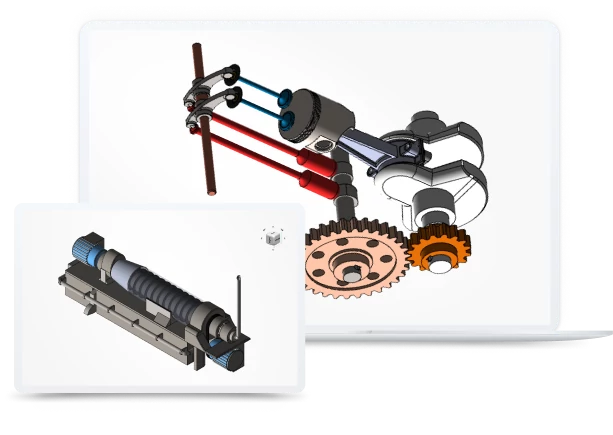
How to convert STEP
to JT?
Applications for end-users. SDK's and tools for software developers. Custom development services for businesses.
Trusted by industry leaders







Available in CAD Exchanger Products
 CAD Exchanger Lab
CAD Exchanger Lab
Desktop app to view, explore and convert 3D CAD data across 30+ file formats
Learn more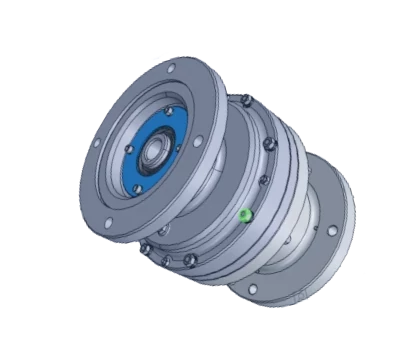

STEP
The STEP format is a neutral file format used for the exchange of data in the field of CAD. It can contain data, such as 3D geometry, product structure, attributes, tolerances, and materials.
Supported versions
Below you can find all the specific types of STEP files that CAD Exchanger supports:
AP203 focuses on mechanical design. It is used to exchange 3D models and associated information for product design and manufacturing processes.
Also known as the Automotive Design Standards, AP214 is used in the automotive industry. It includes additional features to represent complex assemblies and automotive-specific information.
AP242 is an advanced STEP version that supports the exchange of product information throughout the product lifecycle, including manufacturing, assembly, and maintenance.
Support of STEP in CAD Exchanger
During import and export, CAD Exchanger supports:
- B-Rep and polygonal representations;
- assembly structure, including via external files;
- names;
- user-defined and validation properties;
- PMI;
- colors;
- layers.
Follow this link to check out all the CAD Exchanger products.
Pros of the format
Interoperability
Since STEP is a neutral file format, it is not tied to any specific CAD software vendor. Almost any software that works with CAD data, and many programs that work with 3D data, can read or write this format.
Geometry and Data Preservation
STEP files are capable of representing complex 3D geometry, including curves, surfaces, and solids. They also store additional information, such as product structure, attributes, and metadata. This ensures that the integrity of the design is maintained during the exchange process, reducing the risk of data loss or conversion errors.
Long-Term Archiving
STEP files are widely recognized as a stable and reliable format for long-term data archiving. Their standardization ensures that the files will remain accessible and usable in the future.
Cons of the format
File Size
Due to their comprehensive nature, STEP files tend to contain a large amount of data, resulting in larger file sizes compared to other file formats. This can pose challenges when it comes to storage, sharing, and transferring files, particularly in cases where limited storage space or bandwidth is a concern.
The larger file sizes can also impact processing and loading times, especially when dealing with complex assemblies or intricate geometries. It may take longer to open, potentially affecting productivity.
Text-based format
The majority of STEP files are written as text files. While it allows for human readability and easy interpretation, it can introduce potential round-off errors in numerical values. These rounding errors may be negligible in most cases, but they can accumulate and impact the accuracy of the model, especially in situations where high precision is crucial.P
FAQ
What is the advantage of using STEP files?
STEP files offer interoperability, preserve geometry and associated data, are platform-independent, and are suitable for long-term archiving.
How to open a STEP file?
To open this file, you will need a compatible software application, for example, CAD Exchanger Lab. Launch the software and navigate to the 'New file' option. Browse your computer's directories and locate the STEP file you want to open. Then select the file and click "Open". Once the import process is complete, the file should be loaded into the software, allowing you to view and interact with the 3D model and associated data.
Are STEP files compatible with different CAD software?
Yes, STEP files are widely supported by various CAD software applications. They are designed to facilitate interoperability between different programs. See the full list in the 'STEP format is supported by' section.
History of STEP format
The history of this format dates back to the late 1970s when the need for a standardized method of exchanging product data between various CAD systems became apparent. To address this challenge, the International Organization for Standardization formed a committee, ISO TC 184/SC 4, dedicated to developing a universal format.
After years of collaborative effort from experts and industry stakeholders, the first version of the STEP standard, known as AP203, was released in 1994. It aimed to enable the exchange of data for mechanical and electrical designs. Over time, additional versions of the STEP standard were introduced, such as AP214 for automotive design and AP242 for complete product lifecycle information. These versions expanded the capabilities of STEP, accommodating various industry requirements and advancements in technology.
Today, the STEP file format is widely adopted and recognized as a reliable means of exchanging 3D models and associated data between different CAD systems. It has streamlined collaboration, enhanced interoperability, and improved efficiency across industries like automotive, aerospace, and manufacturing.
JT
The JT format is a widely used lightweight 3D data format designed for efficient visualization, collaboration, and sharing of complex 3D models and assemblies. JT files retain the fidelity of the original 3D models while minimizing file size, enabling fast loading and efficient data transmission. The format supports features like precise geometry, polygonal meshes, product structure, PMI, and animations.
Support of JT in CAD Exchanger
CAD Exchanger can import files compliant with the JT formats from 8.0 to 10.9 and ISO14306:2012 and export files compliant with the JT formats 9.5 and ISO14306:2012. Such support includes:
- B-Rep representations;
- polygonal representations (incl. multi-LODs);
- assembly structure, including via external files;
- names;
- user-defined and validation properties;
- PMI;
- colors, materials, textures;
- layers.
Follow this link to check out all the CAD Exchanger products.
Pros of the format
Advanced compression and economical data representations
Advanced compression and economical data representations
The file format employs advanced compression techniques to reduce file sizes without compromising the quality of the content. This enables efficient transmission and storage of 3D models and other visual data.
In addition to compression, JT excels in economical data representations. The format is structured in such a way that it is relatively easy to read in a selective manner. Files typically have smaller file sizes than STEP files with comparable geometry. This is achieved by efficiently representing mesh data through topological compression algorithms, which take advantage of the connectedness between mesh patches. Despite the economical representation, JT files maintain their integrity and provide a comprehensive visualization of the original content.
Great meshes support
The format is designed to handle complex 3D mesh data efficiently, making it ideal for applications that require high-quality mesh representation. JT allows for the precise encoding of mesh data, including vertex positions, normals, texture coordinates, and more. It supports both triangular and polygonal meshes, enabling the representation of intricate geometric shapes with smooth surfaces.
Moreover, JT provides robust support for mesh attributes and properties. This means that additional information, such as material properties, colors, and transparency, can be associated with individual mesh elements or the entire mesh.
Cons of the format
Proprietary legacy
While the ISO standardization brought greater openness and interoperability to this format, the legacy of its proprietary history can still be observed in certain cases. It's worth noting that the specifications for JT 7.x and earlier versions were not publicly accessible, and the format was essentially proprietary, so there were difficulties in reading and writing this format in other CAD software. Fortunately, these versions of files are not used much these days.
Implementing full-fledged JT support can be a demanding task. It requires a deep understanding of the intricacies of the format's specifications and algorithms. This can be a barrier for smaller software developers or independent implementers who may not have the resources or expertise to fully grasp and implement the complexities of the format. As a result, the quality of JT support can vary significantly.
Another consequence of the proprietary nature of the JT format is its lack of openness. The latest JT precise geometry representation is based upon the Siemens PARASOLID, which means a high-quality implementation of the format must also be able to read and write this format.
FAQ
Is JT format specification publicly available?
Yes, it is. The JT Open Program, an industry consortium dedicated to promoting the widespread use of JT as a 3D data format, provides the JT file format specification to the public. It offers various resources, including technical documentation, whitepapers, and specifications related to the JT format. These resources can be accessed on the official JT Open Program website.
What are JT file extensions?
The JT format typically uses the file extension ".jt" to denote JT files. It is worth noting that alternative file extensions may also be used in certain cases, depending on the software or system. However, ".jt" remains the most commonly used and recognized extension for JT files across different platforms and applications.
How to open a JT file?
To open this file, you will need a compatible software application, for example, CAD Exchanger Lab. Launch the software and navigate to the 'New file' option. Browse your computer's directories and locate the .jt file you want to open. Then select it and click "Open". Once the import process is complete, the .obj file should be loaded into the software, allowing you to view and interact with the 3D model and associated data.
History of JT format
The JT format, also known as Jupiter Tessellation, has a long history that traces its origins back to the 1990s. It was developed by Engineering Animation Inc., a company specializing in computer graphics and visualization software. EAI created the JT format as a lightweight and versatile solution for visualizing and sharing 3D data in industries such as manufacturing and engineering.
In 2001, EAI was acquired by UGS Corporation, which later became Siemens Digital Industries Software. Siemens recognized the potential of the JT format and continued its development, expanding its capabilities and promoting its adoption in various industries. Over the years, Siemens has worked to enhance the format, improve its compression techniques, and ensure compatibility with a wide range of software applications.
The JT format gained further recognition and acceptance when it was standardized by the International Organization for Standardization in 2012 as ISO 14306. This ISO standardization solidified the JT format's position as a reliable and widely supported file format for 3D visualization and data exchange. Today, the JT format continues to evolve and is utilized by numerous companies and industries worldwide for effective collaboration, efficient data sharing, and immersive 3D visualization.
Convert STEP
to JT
Need to work with CAD files in numerous formats? No worries.
From STEP to JT, CAD Exchanger gets you covered.
What Our Delighted Customers Say
From Our Blog
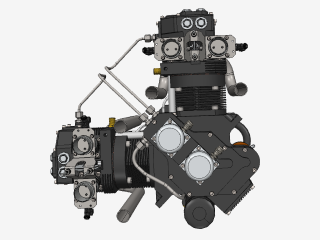
Everything you need to know about CAD file formats
A CAD file is an output of a CAD software, containing key information about the designed object: its geometry and topology representation, 3D model hierarchy, metadata, and visual attributes depending on the format of the file.
Read more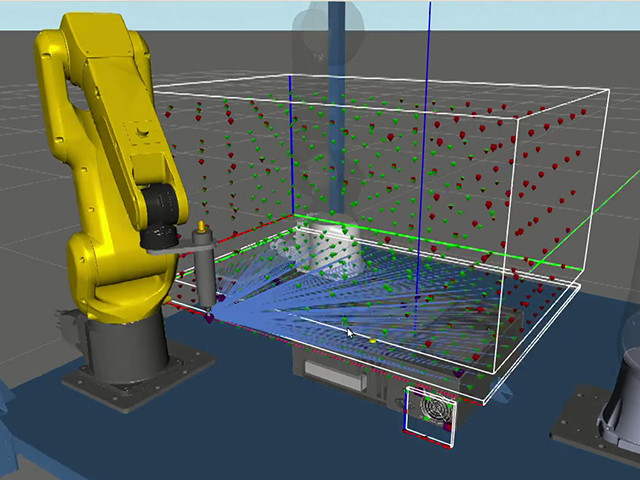
Realtime Robotics enhances responsive workcell monitoring by reading CAD files with CAD Exchanger
CAD Exchanger enables RapidSense and RapidPlan to read 3D CAD formats thanks to a unified API, fast data processing, adjustable meshing, and cancellation support.
Read more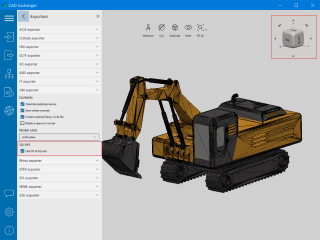
3D XML and Solid Edge, broader versions coverage for CATIA, JT, Parasolid, and SOLIDWORKS mesh colors in CAD Exchanger GUI 3.10
Two new native formats and more possibilities in reading and writing CATIA, JT, Parasolid, SOLIDWORKS, Collada, FBX, GLTF, OBJ, and STEP.
Read more